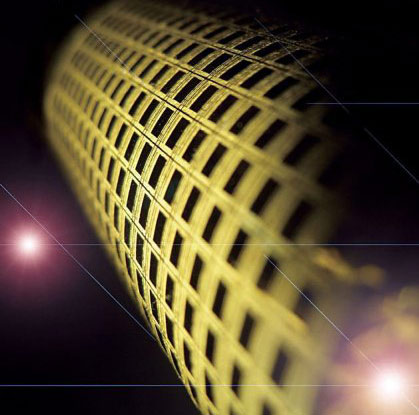Human skin was born
Scientists have successfully built materials that can sense pressure like human skin.
AFP said, Ali Javey, a professor of computer science at the University of California in the US, and colleagues found a way to make electronic leather . It consists of a nanofiber network made up of germanium (Ge) and silicon (Si). The nanofiber network rolls around a polyimide membrane with high adhesion. Nanoscale transistors are placed above the fiber network. A rubber layer with high elasticity and sensitivity to pressure on the top.
The sample version of electronic leather is 49 cm 2 in size. Tests show that it can detect pressure from 0 to 15 kilopascal - equivalent to the force in human daily activities such as typing on a computer, holding a cup.
The University of California study published in British Nature Materials.

The first electronic leather version of the University of California in the US can detect pressures from 0 to 15 kilopascals. (Photo: AFP).
Stanford University Professor Zhenan Bao - now considered one of the top female chemical experts in the United States - also made electronic leather through a different technique. She uses a rubber film with pressure changing properties under pressure . The capacitors are implanted in the rubber film to measure the variation of pressure. The weakness of electronic skin made by Bao is that it does not stretch.
' This electronic skin's response speed is about the same pressure as human skin, which is within a few thousandths of a second. That feature allows electronic skin to feel immediate pressure, 'Bao told AFP.
John Boland, an expert on nanotechnology at Trinity University, Ireland, commented that the two inventions above are an important step in the field of artificial intelligence. In an effort to find electronic devices capable of replacing 5 human senses, scientists have created electronic eyes and electronic ears. Electronic nose, electronic tongue and electronic leather have not been invented yet. Many scientists identify electronic skin as the biggest challenge.

Today's robots take on a lot of difficult things, but because they are unable to perceive pressure as people, they cannot do much of the daily life of people like turning pages, holding glasses. , put the disc. Those who lose their legs and arms can use prosthetic limbs, but those limbs cannot feel the pressure like a true limb. The advent of electronic leather can stop these problems, leading to the generation of robots and fake limbs with delicate skin like human skin.
- 10 interesting things about human skin
- 'Planting' ... human skin in the laboratory
- Smartphones have skin like human skin, shudder
- Discovered where mushrooms have the greatest diversity in human skin
- Video: Evolutionary journey of human skin color
- Human skin can 'sniff' the smell
- Why are our skin colors different?
- Human skin can glow into a watch
- Manufacturing 'electronic leather'
- Many types of bacteria are found on the skin
- Successfully developing blood from human skin, opening a new era for medicine
- As the largest organ and the one that helps us survive, how is the skin made up?
 Daily use inventions come from universities
Daily use inventions come from universities Special weight loss device helps prevent appetite
Special weight loss device helps prevent appetite 8 inventors were killed by their own inventions
8 inventors were killed by their own inventions Iran invented a motor car powered by water
Iran invented a motor car powered by water